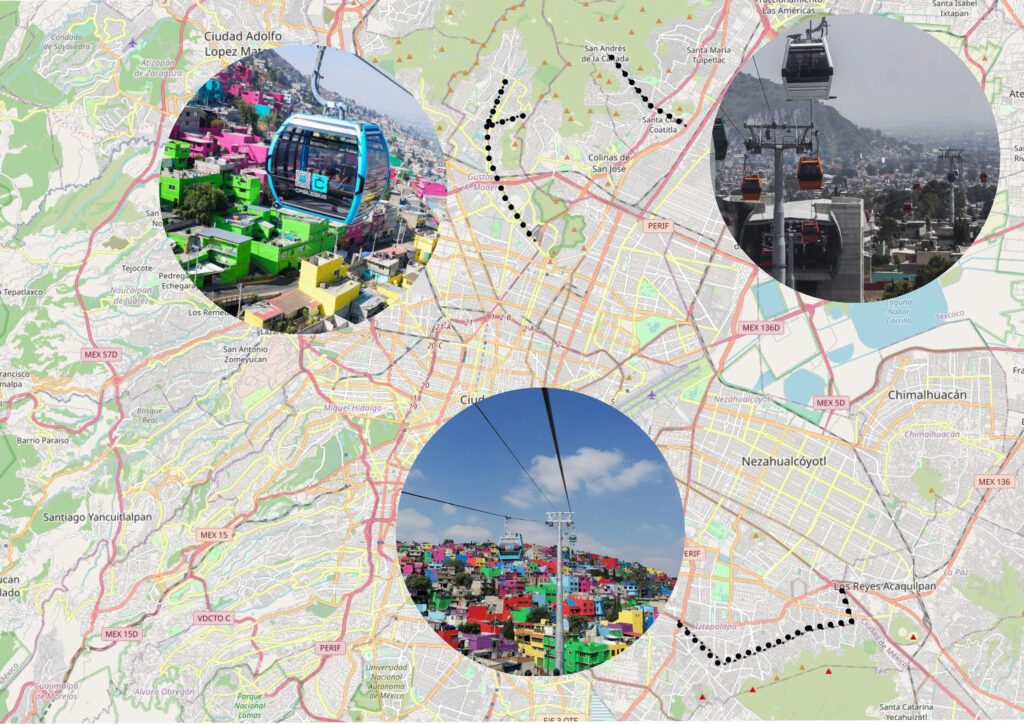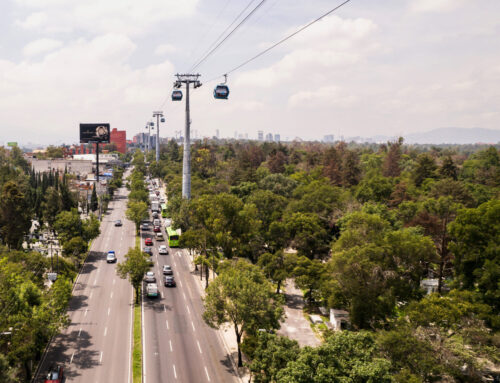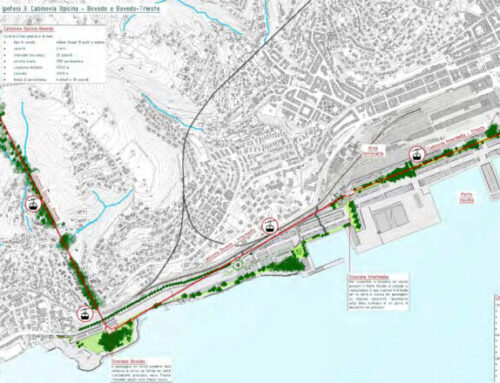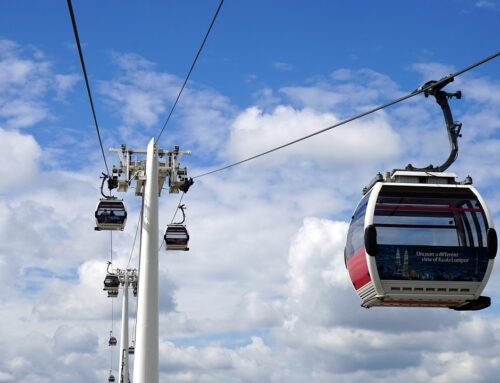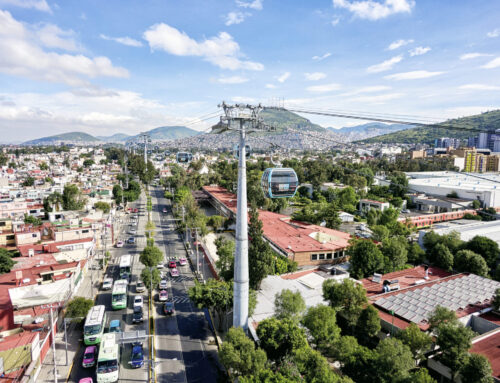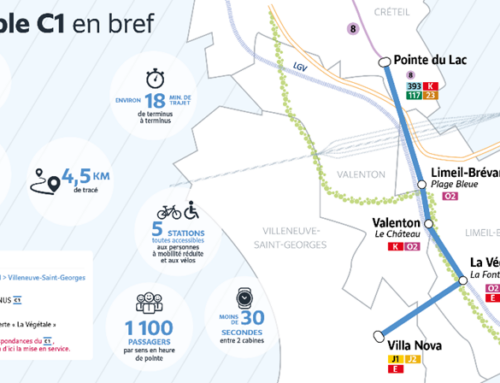
SI-Urban
Mexico City: More targeted maintenance with TRUscan
In rapidly growing cities of over a million people, expansion of the public transport networks is one of the biggest challenges. With the clever use of cable cars, Mexico City has vastly improved the mobility of tens of thousands of residents from areas with weak infrastructure or linked the existing public transport with cable cars – and this network is now also being expanded further.
At the moment, three major cable car lines – Mexicable 1 as well as Cablebús 1 and 2 – already carry tens of thousands of people every day and thus connect substantial parts of the city almost around the clock. Delays as a result of unplanned downtimes have far-reaching consequences. Condition monitoring is therefore a fundamentally important job in the urban sector.
The project team
for TRUscan in Mexico: (from the left: Oliver Reinelt, Matthias Stacher and Tobias Weiss). Photos: FATZER
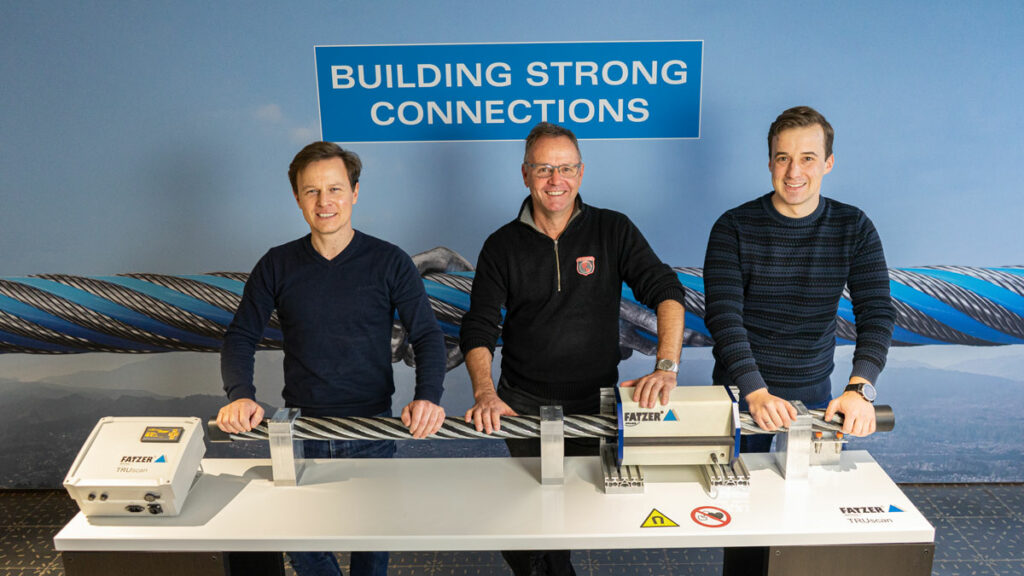
Fully automated inspection
A cable inspection is a sophisticated assessment task that requires in-depth specialist knowledge. Particularly in countries that do not have a long- standing cable car heritage, this is often a challenge. To be able to guarantee maximum safety and availability here too, FATZER has developed a fully automated magneto-inductive testing device, together with the institute of conveyor technology and logistics at the University of Stuttgart.
With TRUscan, stray magnetic fields from a cable are recorded during regular cable car operation with the aid of a testing coil, which provides an insight into the inner workings of a running rope. Breaks in the wire are identified with millimetre accuracy and automatically recorded in a list of damage locations.
This result is available within quarter of an hour after the measured data are uploaded to the myFATZER- Portal, with no additional work for the operator. After storms or gales, manual cable inspections can also be initiated at the touch of a button. With no time-consuming visual inspection, cable car operators can therefore be assured of the operating safety of their cable.
Monitoring Center
Significant deviations automatically appear in the monitoring centre.
![Fatzer_Monitorin_Dez22_160_eci_rgb[92]](https://www.simagazin.com/wp-content/uploads/2023/03/Fatzer_Monitorin_Dez22_160_eci_rgb92-1024x683.jpg)
Progress report from Mexico
In recent months, FATZER has fitted the TRUscan system on all cable sections of the current urban cable cars in Mexico. Installation of the measuring equipment had to take place almost to the exact minute and naturally at night.
Since then, the cable analyses have been provided to the customer at short intervals either fully automatically or even individually, which enables thecustomer to fulfil the due diligence obligation. If significant damage developments are measured on the cable, the FATZER monitoring centre is informed and the situation can be assessed proactively with the cable car operator.
Surprises can therefore be managed easily and predictive maintenance planning is supported from the first day of the operation with the system. Alongside safety, availability is the second extremely important criterion for an urban route. The advent of sensor technology for cable car cables with automated analysis therefore represents a significant innovation step in the safety and availability of urban cable cars.
With a combination of smart technologies and experts on site, FATZER offers individual services coordinated in a modular way for permanently safe, reliable and economical cable operation – one-off, project-based or ongoing.
The cable car network
with TRUscan in Mexico. Map: FATZER
